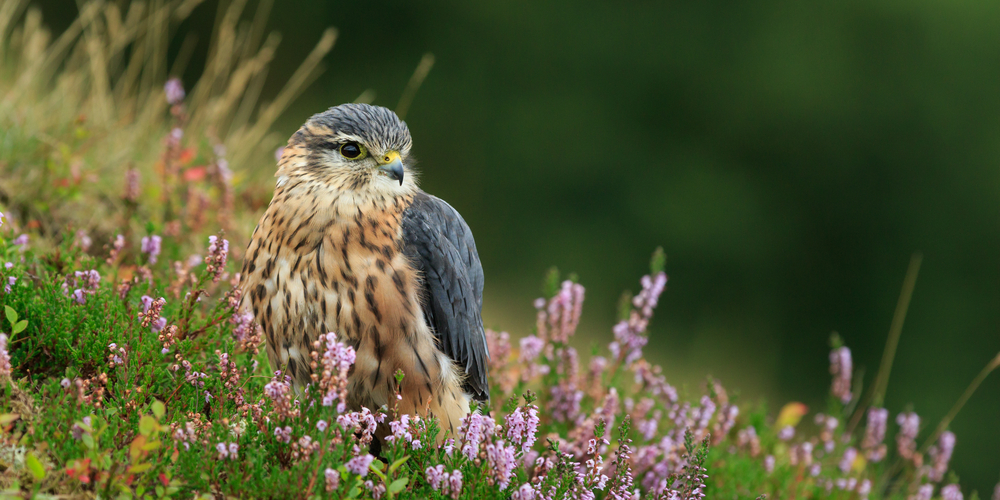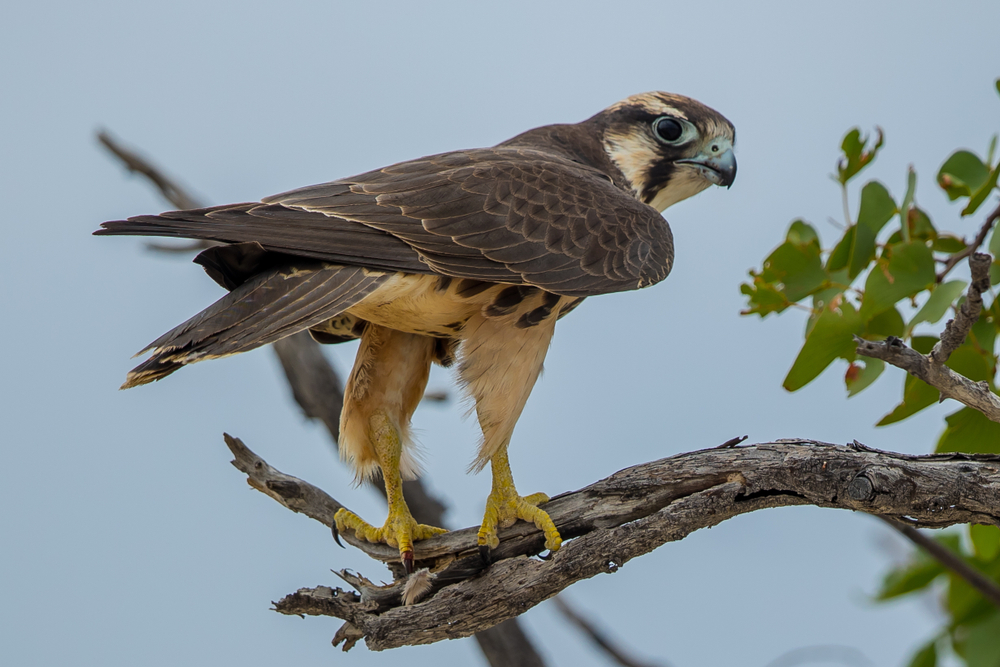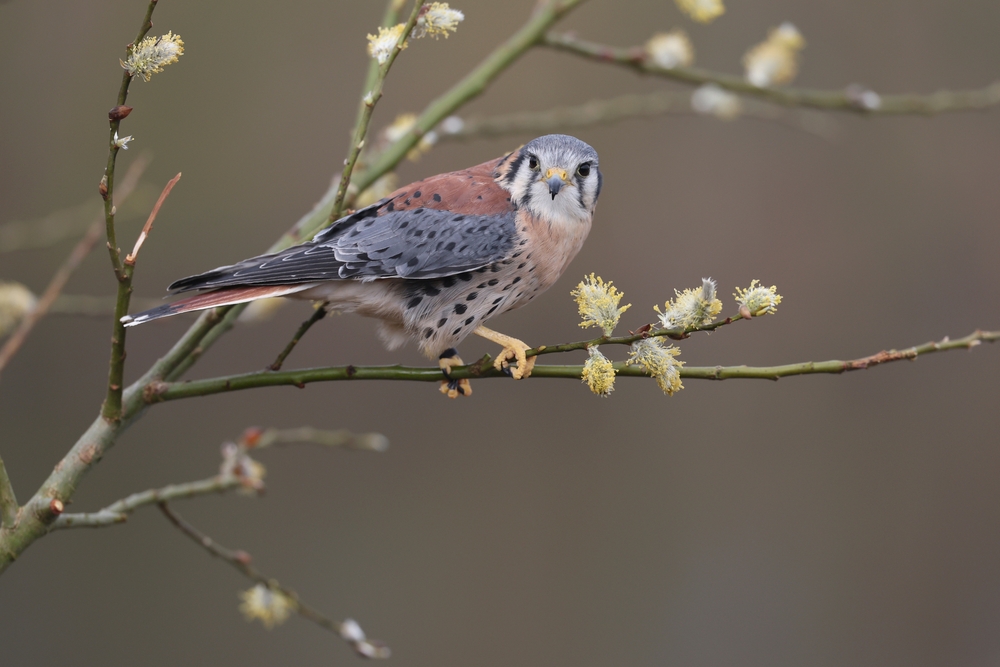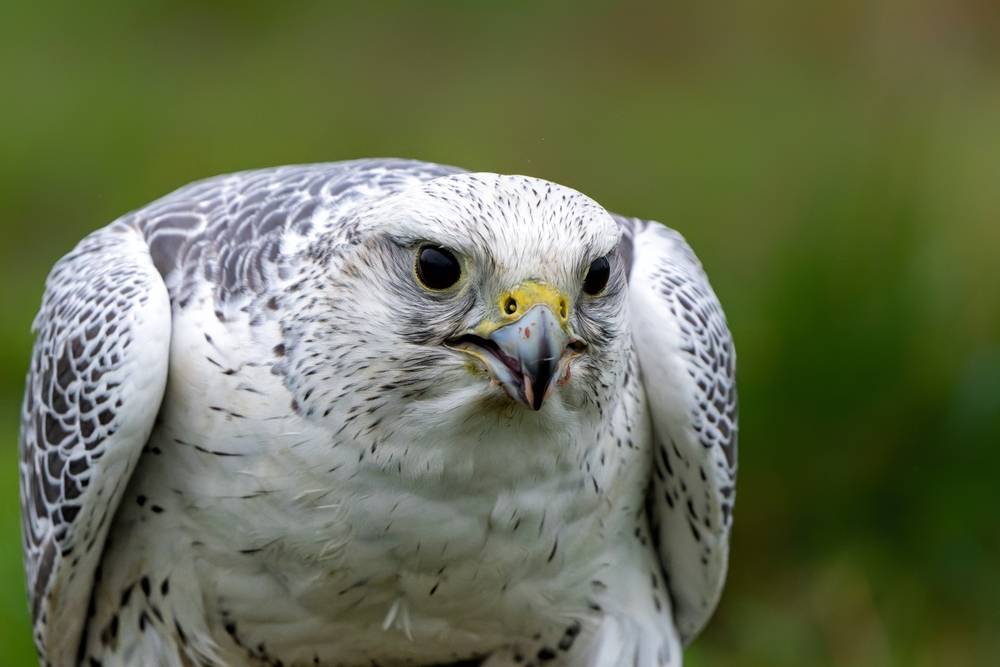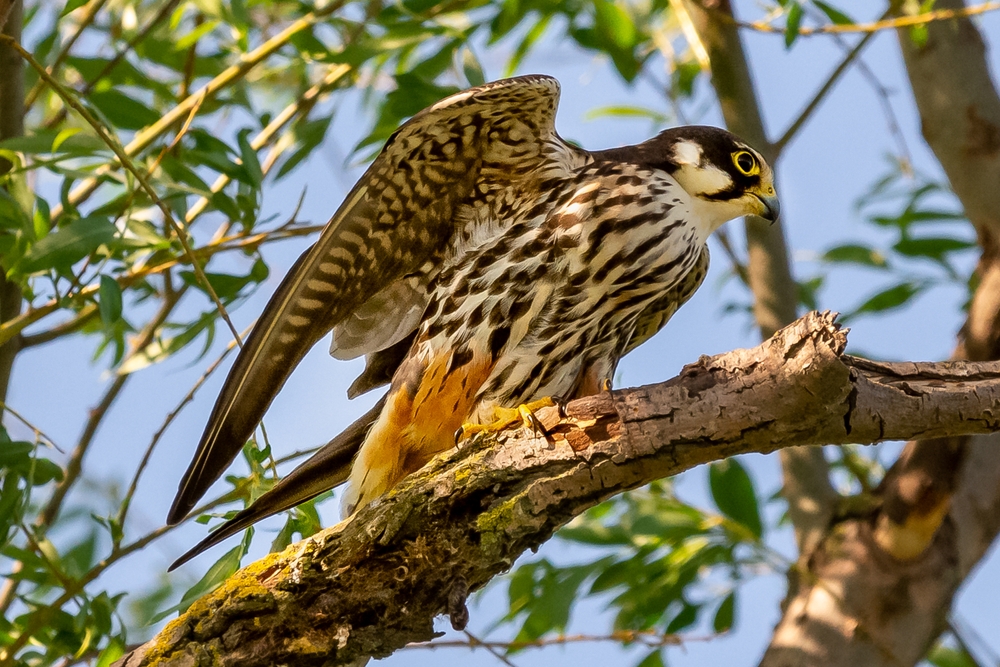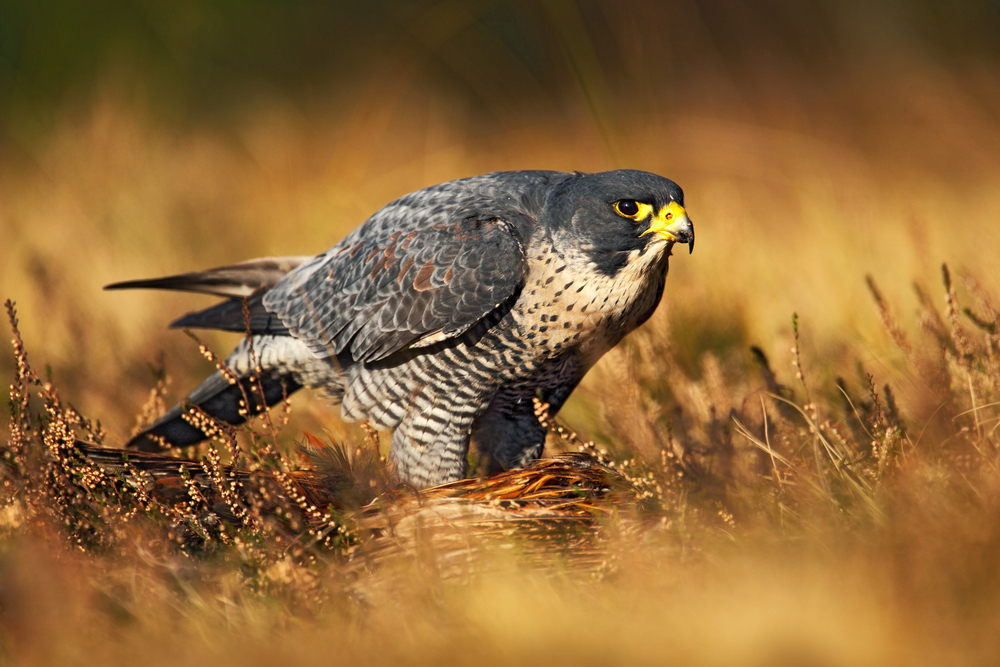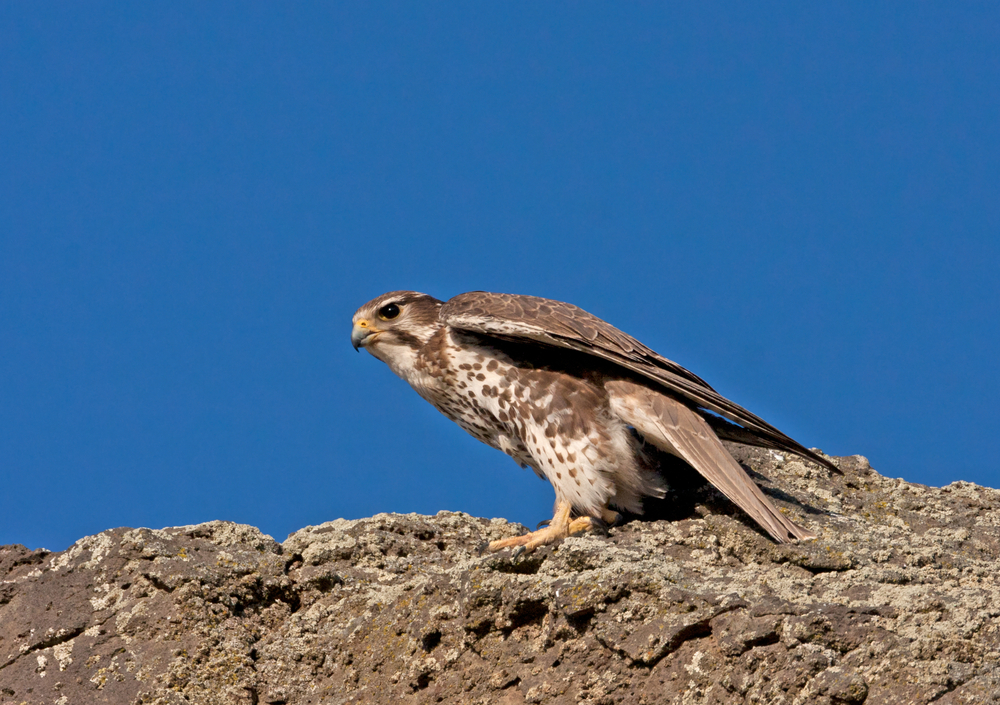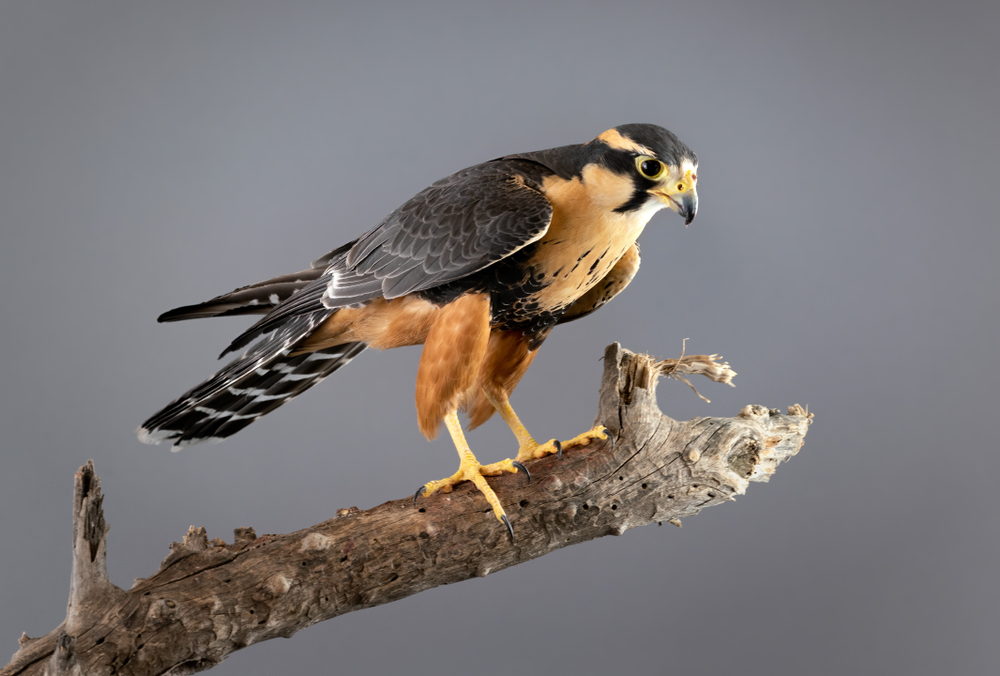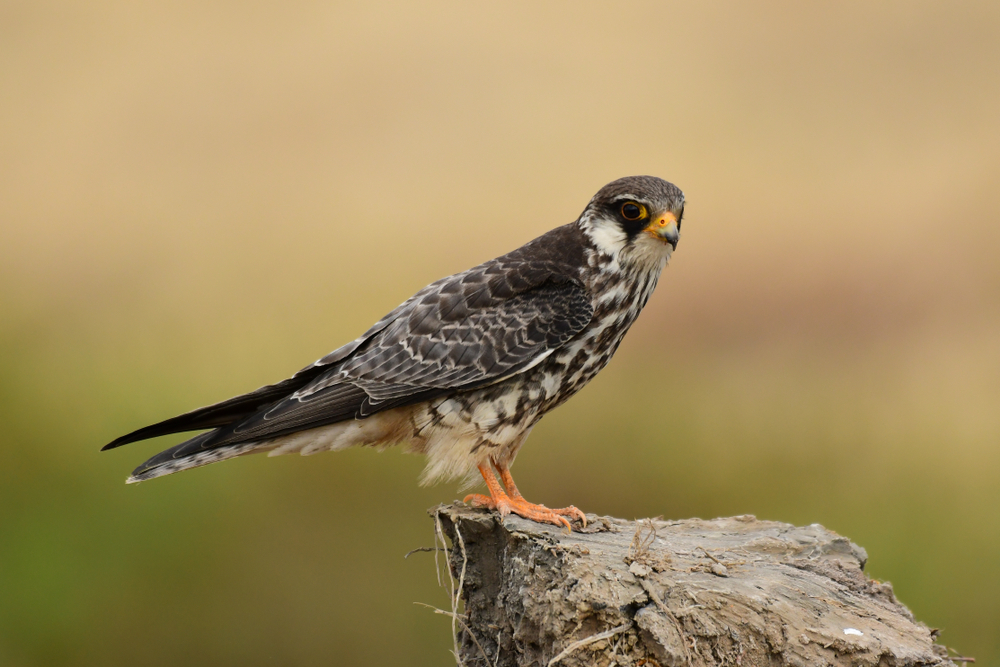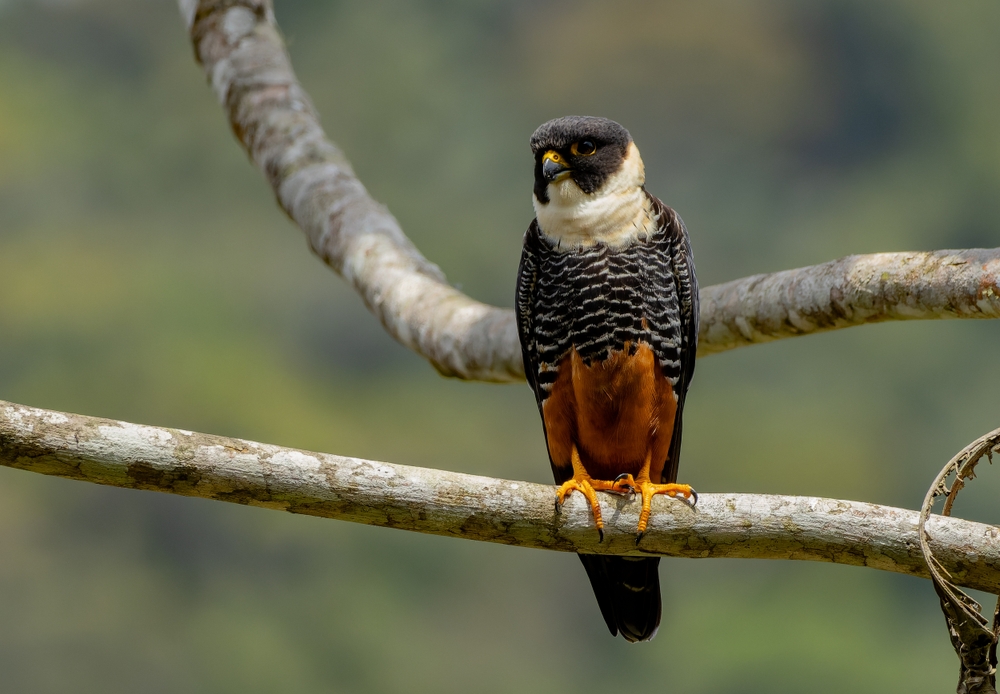The Merlin (Falco columbarius) is most closely related to the Eurasian Hobby (Falco subbuteo) and the American Kestrel (Falco sparverius), sharing similarities in size, hunting methods, and evolutionary lineage among small falcons.
About
The Merlin (Falco columbarius), a small but fierce falcon of the Falconidae family, is a swift, powerful bird of prey found across the Northern Hemisphere. This compact raptor thrives in a wide range of habitats, from northern forests and tundra to open grasslands and coastal regions, and is especially known for its agility and relentless pursuit of prey.
Merlins are medium-sized falcons, smaller than peregrines but larger than kestrels, with wingspans ranging from 53–69 cm (21–27 in). They have pointed wings and a short tail, which together provide incredible speed and maneuverability. Plumage varies by region and sex: males often display blue-gray backs with finely streaked chests, while females and juveniles are browner with heavier streaking, offering camouflage in open landscapes.
Renowned for their aggressive hunting style, Merlins specialize in catching small to medium-sized birds, such as sparrows, starlings, and larks. They typically hunt through fast, low chases over open ground rather than high stoops. Unlike some falcons, they rarely consume insects or mammals, relying heavily on avian prey. Their bursts of speed and surprise tactics make them one of the most efficient small raptors.
Breeding occurs in northern latitudes, where Merlins nest on the ground in open tundra, in trees within old crow or hawk nests, or on cliffs. A clutch usually contains 4–5 eggs, incubated mostly by the female while the male provides food. After hatching, both parents defend the nest vigorously, often attacking much larger raptors that venture near.
Historically, Merlins were favored in medieval falconry, often used by noblewomen due to their manageable size and fiery temperament. Today, they remain widespread and stable, though habitat changes and prey fluctuations can affect local populations. Their adaptability and bold nature make them one of the most spirited falcons in the wild.
Physical Characteristics
The Merlin (Falco columbarius) is a small, powerful falcon known for its stocky build, rapid wingbeats, and aggressive hunting style.
Plumage:
-
Males: Blue-gray upperparts, lightly streaked underparts, and a faintly banded tail.
-
Females: Brown above with heavy streaking below, giving them a more mottled appearance than males.
-
Juveniles: Resemble females but are generally darker and more heavily streaked.
Head and Face:
Merlins lack the bold facial markings of many falcons. They show only a faint mustache stripe, giving their face a more uniform look. Their dark eyes are set against a yellow cere and orbital ring.
Body and Wings:
The body is compact and muscular, with relatively broad shoulders. Wings are short, pointed, and powerful, designed for speed and maneuverability in fast, low-level pursuits. Their flight is characterized by rapid, strong wingbeats rather than gliding.
Tail:
The tail is medium-length, square-tipped, and strongly banded with dark and light stripes. It is a key aid in sharp turns during pursuit flights.
Size:
-
Length: 9.5–12 in (24–30 cm)
-
Wingspan: 20–26 in (50–65 cm)
-
Height at Rest: About 10 in (25 cm) when perched
Weight:
-
Adult Male: 5.6–7.4 oz (160–210 g)
-
Adult Female: 7.8–8.5 oz (220–240 g)
The Merlin’s compact body, square-tipped tail, and lack of bold facial markings distinguish it from other small falcons. Its powerful, direct flight and preference for fast chases over stooping attacks reflect its specialization as a relentless hunter of small birds.
Reproduction
The Merlin (Falco columbarius) has a reproductive cycle adapted to northern latitudes and open habitats, nesting across boreal forests, tundra, and grasslands.
1. Mating and Courtship:
Merlins are monogamous during the breeding season, with some pairs reuniting in subsequent years. Courtship includes fast aerial chases, vocal calls, and food offerings from the male to the female.
2. Nesting Sites:
They do not build their own nests. Instead, Merlins reuse abandoned nests of crows, magpies, or hawks, often in coniferous trees, cliffs, or occasionally on the ground in tundra regions. In urban areas, they may nest on building ledges.
3. Egg Laying:
The female lays 3–6 eggs per clutch, usually between late May and June depending on latitude. Eggs are reddish-brown with darker speckling.
4. Incubation:
Incubation lasts about 28–32 days, carried out mostly by the female. The male provides food during this time and helps defend the nesting territory.
5. Hatching and Care of Chicks:
Chicks hatch covered in white down and are altricial, requiring full parental care. The female broods the chicks during the early weeks, while the male supplies prey. As the young grow, both parents share feeding duties.
6. Fledging and Independence:
Nestlings fledge at about 25–30 days of age, though they remain dependent on their parents for food and hunting lessons for several additional weeks.
7. Breeding Frequency:
Merlins raise one brood per year, with breeding success tied closely to prey availability, especially populations of small birds.
The Merlin’s reliance on old nests, relatively large clutch size, and strong territorial defense help ensure breeding success in its northern and open-country habitats.
Lifespan
The Merlin (Falco columbarius) has a moderate lifespan for a small falcon, influenced by high juvenile mortality and pressures from predation and migration.
Lifespan in the Wild:
In the wild, Merlins typically live 6–10 years, though many do not survive their first year due to starvation, predation, or accidents. The oldest known wild Merlin lived to be about 13 years.
Lifespan in Captivity:
With steady food, veterinary care, and freedom from predators, Merlins may live up to 15–16 years in captivity.
Threats to the Merlin:
-
Predation: Eggs and chicks are preyed upon by crows, ravens, and larger raptors. Adults may fall victim to hawks and owls.
-
Food Availability: Their survival depends heavily on the abundance of small birds and insects. Population declines in prey can reduce breeding success.
-
Habitat Loss: Conversion of grasslands, forests, and wetlands to agriculture and development reduces nesting and hunting grounds.
-
Collisions: Window strikes and vehicle collisions are a significant source of mortality, especially in urban areas.
-
Climate Change: Shifts in migration timing and prey availability may affect long-term survival.
Despite these challenges, Merlins are resilient and adaptable, maintaining stable populations in many parts of their range.
Eating Habits
The Merlin (Falco columbarius) is a fierce, fast hunter that relies on endurance chases rather than high-speed dives, specializing in capturing small birds in open country.
Diet:
-
Birds: Make up the bulk of their diet, including sparrows, starlings, finches, larks, and shorebirds.
-
Insects: Large insects such as dragonflies, beetles, and grasshoppers, especially in summer.
-
Small Mammals: Occasionally take rodents or bats, though these are less common.
Hunting Strategy:
-
Aerial Chases: Merlins prefer long, low, fast pursuits, often chasing prey across open fields or along tree lines until exhaustion.
-
Ambush: They may launch surprise attacks from low perches or cover, flushing flocks and singling out one bird.
-
Flock Targeting: They often attack flocks of small birds, creating panic and isolating weaker individuals.
Feeding Behavior:
-
Prey is usually killed quickly with a strong bite to the neck.
-
Small prey may be consumed on the wing, while larger prey is carried to a perch.
-
During breeding, males capture most of the prey and deliver it to the female and chicks, often with dramatic mid-air food passes.
Success and Adaptability:
Merlins are aggressive, determined hunters and are successful even against fast, agile birds. Their ability to thrive in open tundra, grasslands, wetlands, and urban areas reflects their adaptability, though they rely heavily on small bird populations.
Uniqueness
The Merlin (Falco columbarius) is a small but powerful falcon with several traits that make it stand out among raptors.
Relentless Hunters:
Unlike Peregrine Falcons that rely on steep stoops, Merlins specialize in long, fast chases, often pursuing prey at treetop level or across open fields until it tires.
Small but Fierce:
Despite being one of the smaller falcons, Merlins are fearless and aggressive, frequently taking on prey their own size and even chasing off larger raptors.
Minimal Facial Markings:
Unlike many falcons, Merlins lack bold facial stripes. Their plain face and streaked chest give them a more subdued but distinctive appearance among falcons.
Widespread Range:
Found across North America, Europe, and Asia, Merlins occupy tundra, forests, grasslands, and even urban environments, showing remarkable adaptability.
Historic Role in Falconry:
Known as the “lady’s falcon” in medieval falconry, Merlins were highly prized by noblewomen for their speed and skill in catching small birds.
Migration and Winter Adaptability:
Many populations migrate long distances, wintering in temperate and subtropical regions. In winter, they often hunt flocks of small birds in farmlands and coastal areas.
The Merlin’s combination of relentless hunting, bold behavior, and cultural history in falconry makes it one of the most fascinating and resilient small falcons worldwide.
Be the First to Share Photos of This Species.
FAQ’s
1. What is the species closest to the Merlin?
2. How does the Merlin compare to other falcons?
The Merlin is stockier and more powerful than the slender Eurasian Hobby, relying on relentless chases rather than agile twists. Compared to Peregrines, Merlins are smaller but equally fierce, often attacking prey their own size and showing bold, aggressive behavior uncommon in such a small falcon.
3. Which national parks provide the best opportunities to see a Merlin?
Which national parks provide the best opportunities to see a Merlin?
-
Yellowstone National Park (USA): Breeds in forests and hunts small birds in meadows.
-
Denali National Park (Alaska, USA): Seen hunting across tundra landscapes in summer.
-
Cairngorms National Park (Scotland): A key breeding site in moorland habitats.
-
Jasper National Park (Canada): Offers good chances of spotting Merlins during breeding season in open forests and wetlands.



































































